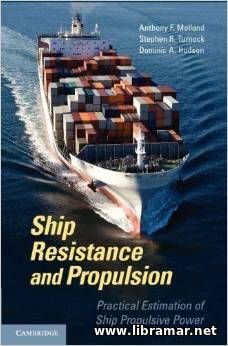 The volume has been fully dedicated to the provision of a modern and comprehensive scientific approach to the evaluation of the resistance and propulsion of ships. The masses of the propulsion engines can be established and fuel consumption and approximate operating costs can be estimated through the study of the propulsive power.
The present publication prepared by the world leading experts includes the recent developments from the applied researches including the researches conducted in CFD and also experimental techniques, providing all required guidance for the estimation of the propulsive power for a broad range of vessels.
The text of this volume includes published data for the resistance of the ship's hull and performance of the ship's propellers n order to enable the practitioners to make proper predictions of the ship's power on the basis of the materials and data contained in it. The authors have also included numerous illustrative worked examples to demonstrate the practical applications of the subject data as well as powering methodologies.
The publication is mainly aimed at a very wide readership including practicing marine engineers and naval architect together with the sea-going officers and craft designers, plus of course under- and post-graduate students of all above listed disciplines.
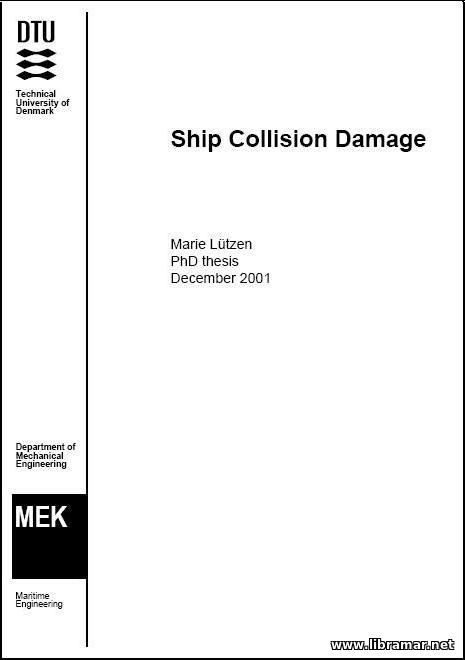 The main declared purpose of the author of the present thesis was to develop a procedure for the analysis of the ship collisions that would address all ship types and all possible damage scenarios. Among the main aspects covered within this work are the deterministic analysis and numerical Monte Carlo-based simulation of collisions to estimate the distributions for the damage expected to occur to the struck vessel and released energy, damage statistics analysis, and new proposal for the regulations governing the damage stability applying the probabilistic approach.
Three new programs have been developed and introduced for the deterministic analysis, addressing the damage to the struck vessel, striking vessel and to both of them. The author has conducted a thorough analysis of the information contained in the database of the damage from collisions occurred in the past with respect to the type of collision and relation between vessels plus the parameters of damage and the main particulars.
Chapters of the thesis cover the risk analysis, external dynamics and internal mechanics of ship collisions, deterministic and probabilistic analysis of collisions, damage statistics, comparison of the results obtained in the course of the observations and simulations, stability regulations, input for the collision programs, damage relations and other relevant information.
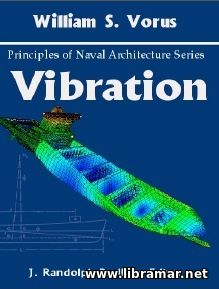 Several quite significant technical developments and achievements have been accomplished in the area of ship hull vibration during past couple of decades allowing for serious improvements in the technologies for design of ships through avoidance of the excessive hull vibration. The present volume has been specifically designed to deal with the most important technical of the vibration of hull.
This book is opening with the intro section that provides designers with the general info and also basic definitions. The second section is dealing with the theory and concepts of vibration, including the continuous and discrete analysis together with the underwater radiated noise and ship propeller exciting forces. The third section of the title mainly covers the analysis and design issues including basic considerations plus design approaches, added mass and excitation of the diesel engine/propellers, stiffness of foundation of the main thrust bearing, approximate evaluations governing the natural frequencies of the superstructure, cavitation noise etc.
The last section of the volume covers the criteria of vibration, its measurement including design verification and corrective investigation, and post-trial corrections including both hydrodynamic and structural modifications, propeller change and determining the model constraints. Very useful title for all ship designers.
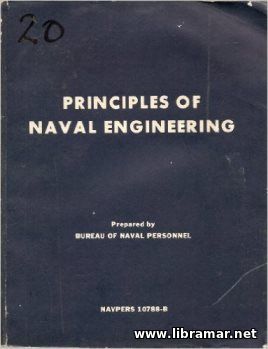 This text has been originally prepared and published for the engineering officers to provide them with the basics of the shipboard machinery and equipment as well as of the engineering plants. The authors of the paper have also given some general description of the development of the naval vessels, their design and construction, naval architecture aspects such as buoyancy and intact/damage stability, and casualty control.
The explanation of the engineering theories has been provided on the background of the propulsion and steering of the vessels, systems of lubrication, thermodynamics, energy exchanges and measuring devices. The machinery of the ships has been dealt with in detail. The publication concludes by a thorough and interesting survey covering the newly developed ship hull forms, propulsion and steering arrangements, systems for direct conversion of the energy, central operation systems, combined power plants etc.
The text is supplemented with numerous informative illustrations and data tables. The authors have tried to assist students to acquire an overall view of the engineering plants installed on board and properly understand all associated theoretical considerations underlying the design of shipboard machinery and equipment. Note that the details of the operation of the vessels, as well as of the maintenance and repair of the shipboard equipment is not covered.
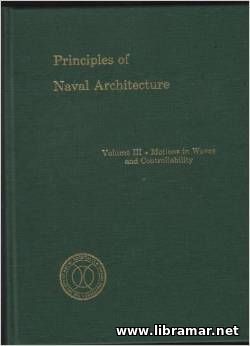 And this is the third part of volume of the set of Naval Architecture books (Part 1 and Part 2 here), and the present volume is dedicated to the motion of ships in waves and their controllability, i.e. the last two chapters of the course. Taking into account the importance of all recent theoretical and also experimental developments in the subject fields, the authors considered it necessary to fully rewrite the content of both those chapters and to add a great portion of the new material.
The chapter on motion in waves covers such the important aspects as the characteristics ocean waves, their origin and propagation, responses of the vessel to the ocean waves, ships in the seaways, derived responses and ship motion control, assessment of the ship seaway performance, various aspects of design, and relevant nomenclature. The chapter covering the controllability addresses the control loop together with the basic equations of ship motion. stability and associated linear equations, stability and control, turning ability, controls-fixed stability and coursekeeping, hydraulic models, free-running tests, non-linear motion equations, acceleration/stopping/backing, hydrodynamic coefficients, auto-control systems, waterway interactions, performance requirements, design applications, special symbols, control devices and many other critically important topics.
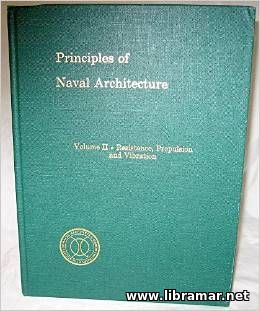 The second part of the set (here are Part 1 and Part 3). This books addresses the ship resistance, ship propulsion and ship vibration. The ship resistance-related chapter provides all necessary theoretical information of the resistance types, surface vessels and submerged objects, dimensional analysis, frictional and wave-making resistance, plus other resistance components, use of the models for determination of the hull resistance, presentation of the model resistance data, HSC and advanced marine vehicles, and relation of the ship hull form to its resistance.
The propulsion-related chapter deals with the powering of vessels, propeller action theory, similitude law, self-propulsion tests, geometry of the screw propellers, interaction between ship's hull and propeller, cavitation, ducted propellers, various design matters, standardization trials and other devices for ship propulsion. Finally, the chapter covering the ship vibration provides the general information on the subject, covering the fundamental theoretical concepts, analysis and design issues including diesel engine and propeller excitation, applicable criteria and associated measurements, and other topics. The separate part of the volume has been dedicated to the nomenclature used throughout the book and in naval architecture, in general.
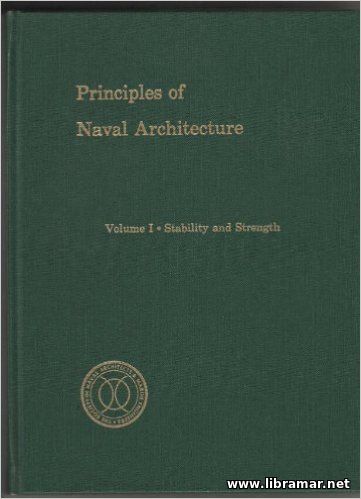 One of the most popular and classical books on naval architecture, "Principles" is arranged in three volumes. You will find the first of the volumes here (and here are Part 2 and Part 3). The initial edition of this book was released in 1939 and, according to the editors, adequately covered the whole field of naval architecture in a single text. The revision hereby presented to your attention has been conducted in order to duly reflect all recent technical developments and make all necessary improvements to the original content.
This book is actually aimed to bring the subject of naval architecture up-to-date by means of re-writing the areas where the most important advances took place. One of the main objectives of this set of books is to provide all readers having serious interest in naval architecture with a remarkably timely survey of the fundamental principles; the books are expected to be of great use for active professional as well as for the students.
The content of the first volume has been arranged in four big parts covering the geometry of the vessel including the lines drawing, form coefficients, relationship between weight and displacement, hydrostatic curves, capacity etc., elementary principles of intact stability, its evaluation, displacement, trim, draft and other characteristics, subdivision of the hull and damage stability, and, finally, the strength of the ship's hull.
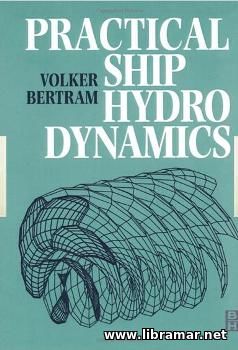 This book starts with the five chapters providing readers with the general introduction to the hydrodynamics of the ship's hull. It is assumes that the readers have a solid knowledge of the general fluid dynamics. Though there are numerous books available on the market, it should be underlines that naval architects must concentrate on selected aspects of their field and try to cover the materials exactly suited to their practical needs, and this is a strategy supported by the author of this title.
The first of the chapters gives an introduction to the CFD while the other four chapters are covering the areas of propeller flows, hull resistance and ship propulsion, seakeeping and maneuvering of the ship. This is the recommended sequence of teaching. The aim of these chapters is to find a balance for the practical naval engineers between the facts and minimum of formulas. However, some formulas are still there included to help people engaged in computations or programming tasks.
People having only practical interest may easily ship these passages. The final two chapters of the book are involving a bit more extensive formula work and are therefore more specialized; they have been reserved mainly for the post-graduates and will assist them in gaining the proper understanding and development of the boundary element codes...
|







